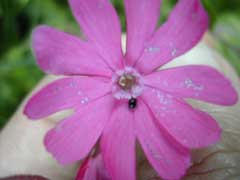
Planting by the Stars - Times That Assist
Until we have collected and evaluated enough results to offer independent conclusions, we will pass on others' general recommendations (with tremendous gratitude for their many years of focused application. However, we remind you that none of these recommendations are unanimous.) You have enough information to propose your own specific daily recommendations or consult the available calendars; we are not aiming to replace them here. Considera wants your results from wherever they have been advised. We will only suggest times at which we expect some good contrasts to become manifest based on the fullest understanding we have at the time.
Kollerstrom; use the four-element rhythms and the hour of moonrise to achieve an enhanced yield when sowing, and harvest also in the appropriate Moon element. If you want your vitality in the top of the plant - for fresh consumption or grafting - use the growing Moon. If you want the vitality to remain with the organism - as with pruning, gelding, or for storing - use the waning Moon. Avoid the Moon's passage through the nodes, especially if there is an eclipse. The solunar cycle has not convinced Mr Kollerstrom. Sowing before the full moon may assist in dry times but increased crop yields are unlikely to come due to this action alone. Biodynamic growers often use the Saturn-Moon opposition especially for perennial planting.
Thun: use the four-element rhythms during 'planting time' (ie a descending Moon phase). water in the seed or seedling and then avoid irrigation if possible. Use only mature composts and manures. Tend and harvest your crops during the appropriate elemental phase. Avoid all conjunctions and squares. Look to other celestial aspects with each other and nodes.
Planetary specifics can be looked up here, but this is a discipline that can be considered to be either in its scientific infancy or its folklore decadence, and is to be considered as particularly tentative guidance.
